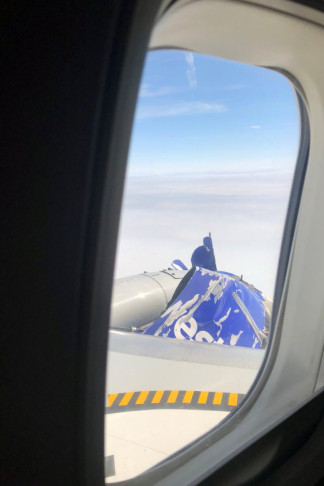Southwest passenger’s livestreaming stricken flight

It was possibly the first time someone who thought he was going to die in a plane crash live-streamed the experience.
Martinez lived. One passenger, bank executive Jennifer Riordan, was killed when she was partially pulled through a shattered plane window.
But while Martinez, who runs a Dallas marketing agency, said on Wednesday he wanted to communicate with loved ones, many social media users attacked him in expletive-laced postings, with one saying Martinez himself should have been the one who died.
‘Trying to contact loved ones is one thing, but to morbidly video and take pictures to post publicly is completely disgusting. Evidently the wrong person was taken from that flight,’ Dennis Miller said on Facebook in a posting that included colorful language to describe Martinez.
Many social media users defended Martinez’s use of Facebook Live, but some said he violated passengers’ privacy and sought cheap fame. Others said he was selfish to focus on messaging instead of on the critically injured passenger a few rows away.
‘You represent the worst of social media,’ Tom Burke said on Facebook.
The event illustrates thorny issues facing platforms such as Google’s YouTube, Twitter’s Periscope and Facebook, already under pressure over privacy and news curating, over hosting live-streaming material.
Facebook did not respond to a request for comment on Martinez’s posts.
Earlier this month, Facebook vice president Fidji Simo talked about the power of live streaming.
‘Live can be a powerful tool in connecting and supporting communities during moments of crisis,’ Simo said in a post.
Since 2016, the average number of daily Facebook Live broadcasts has doubled year over year, with 3.5 billion live broadcasts since then.

 Reuters
Reuters




